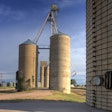The opioid epidemic is taking its toll on rural America, and it's hitting farm and ranch families especially hard. The American Farm Bureau Federation and National Farmers Union are joining forces in the fight against opioid addiction with a campaign called Farm Town Strong.
People are often ashamed or embarrassed to talk about addiction, but everyone needs to be able to openly discuss this problem and face it head-on if we’re going to get help to those who need it—before it’s too late.
Impact
Opioids have been too easy to access, and many people do not understand how easy it is to develop an addiction. In fact, opioid and heroin addiction often start with people using what they believe are safe painkillers. According to the Centers for Disease Control and Prevention, opioids – including prescription painkillers, heroin and fentanyl – killed more than 42,000 people in 2016, more than any year on record, with higher overdose rates in rural areas. AFBF and NFU sponsored a Morning Consult survey to understand the scope of the crisis facing our rural communities.
Survey results showed:
- Three in four farmers and farm workers (74%) are or have been directly impacted by opioid abuse, either by knowing someone, having a family member addicted, having taken an illegal opioid or having dealt with addiction themselves.
- Three in four farmers (77%) and agriculture workers (76 percent) say it is easy to obtain a large amount of prescription opioids or painkillers without a prescription in their community.
- Rural adults overwhelmingly recognize that opioid abuse can begin accidentally with the use of what are deemed safe painkillers, or opioids (75%).
- Half of farmers and farm workers (50%) say addiction to opioids is a disease, rather than due to a lack of willpower.
- Rural adults are largely unaware that rural communities are impacted the most by the opioid crisis (31%). And, they say, opioid abuse is a major problem in urban communities more so than in rural communities by a 10-point margin (57% vs. 47%).
- Only one in three rural adults (34%) say it would be easy to access treatment for addiction to prescription drugs or heroin in their local community. Less than half (38%) are confident they could find care that is either effective, covered by insurance, convenient or affordable.
- One in three rural adults say there is a great deal of stigma associated with opioid abuse in their local community (31%), and that the stigma of abuse and addiction contributes a great deal to the opioid crisis (32%).
- A strong majority of rural Americans believe increasing public education surrounding resources (68%) and reducing the shame or stigma around opioid addiction (57%) are effective means for solving the opioid crisis.

















